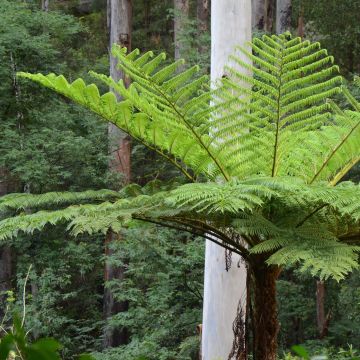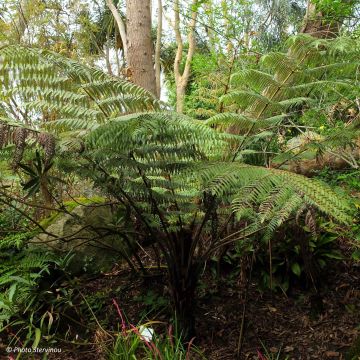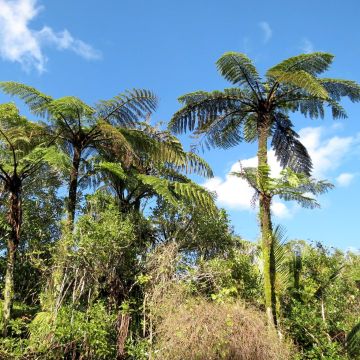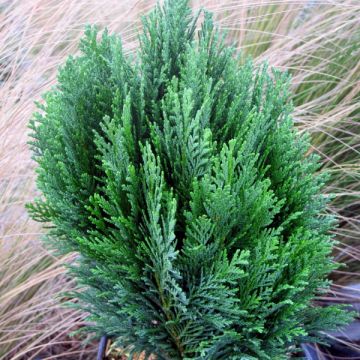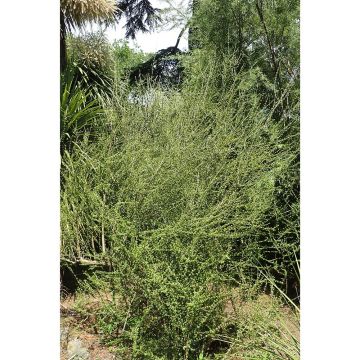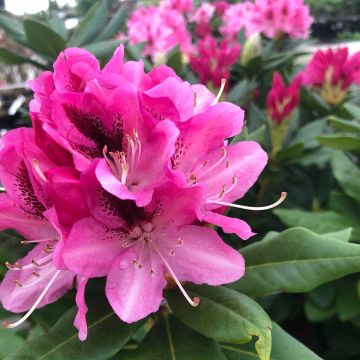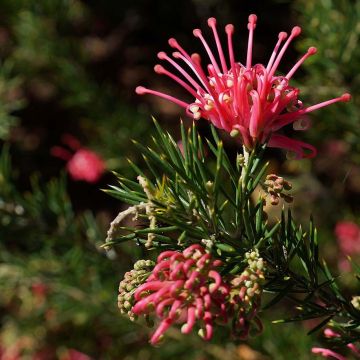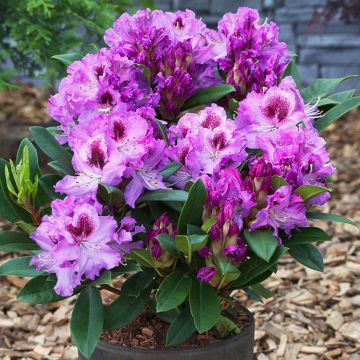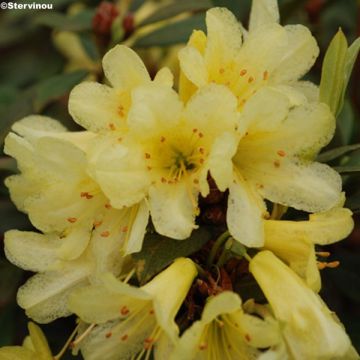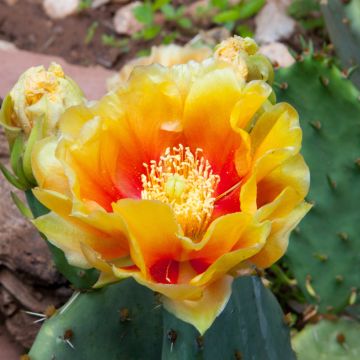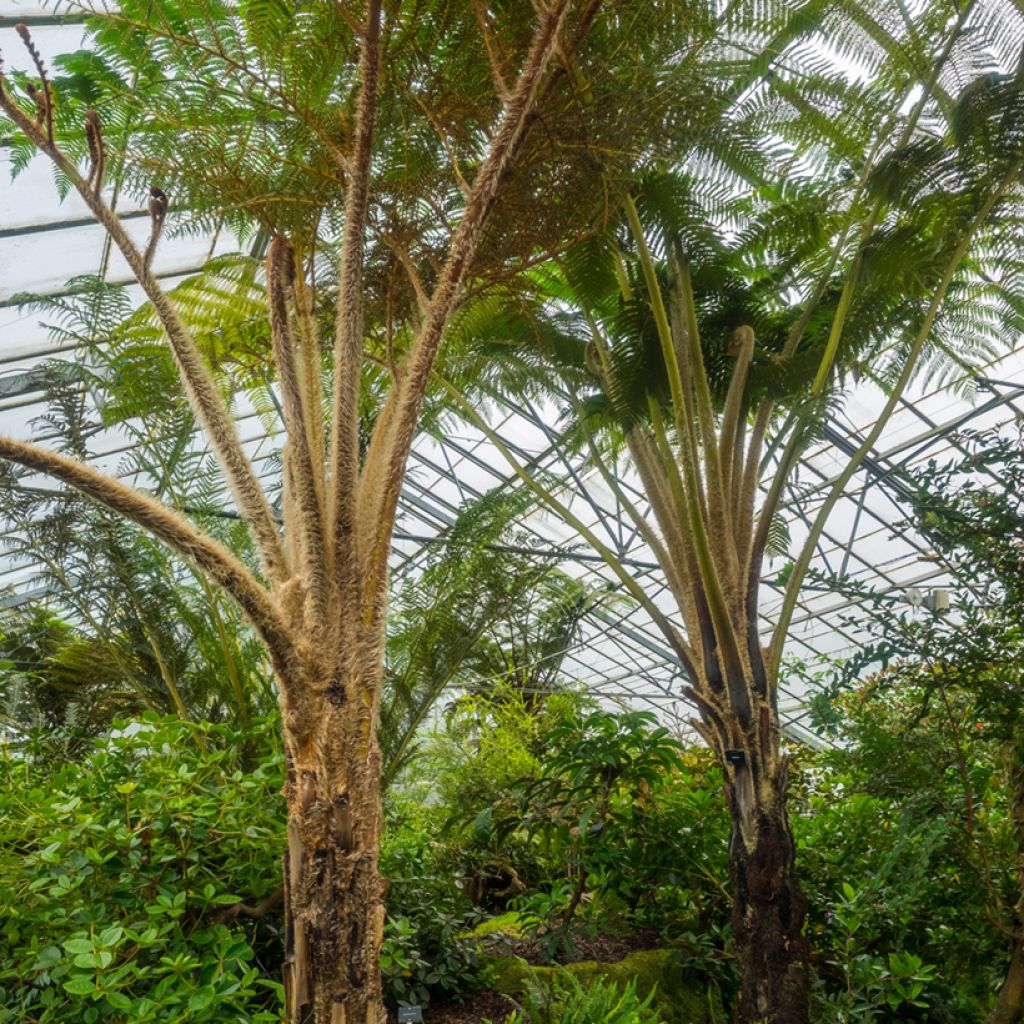

Cyathea felina - Tree fern
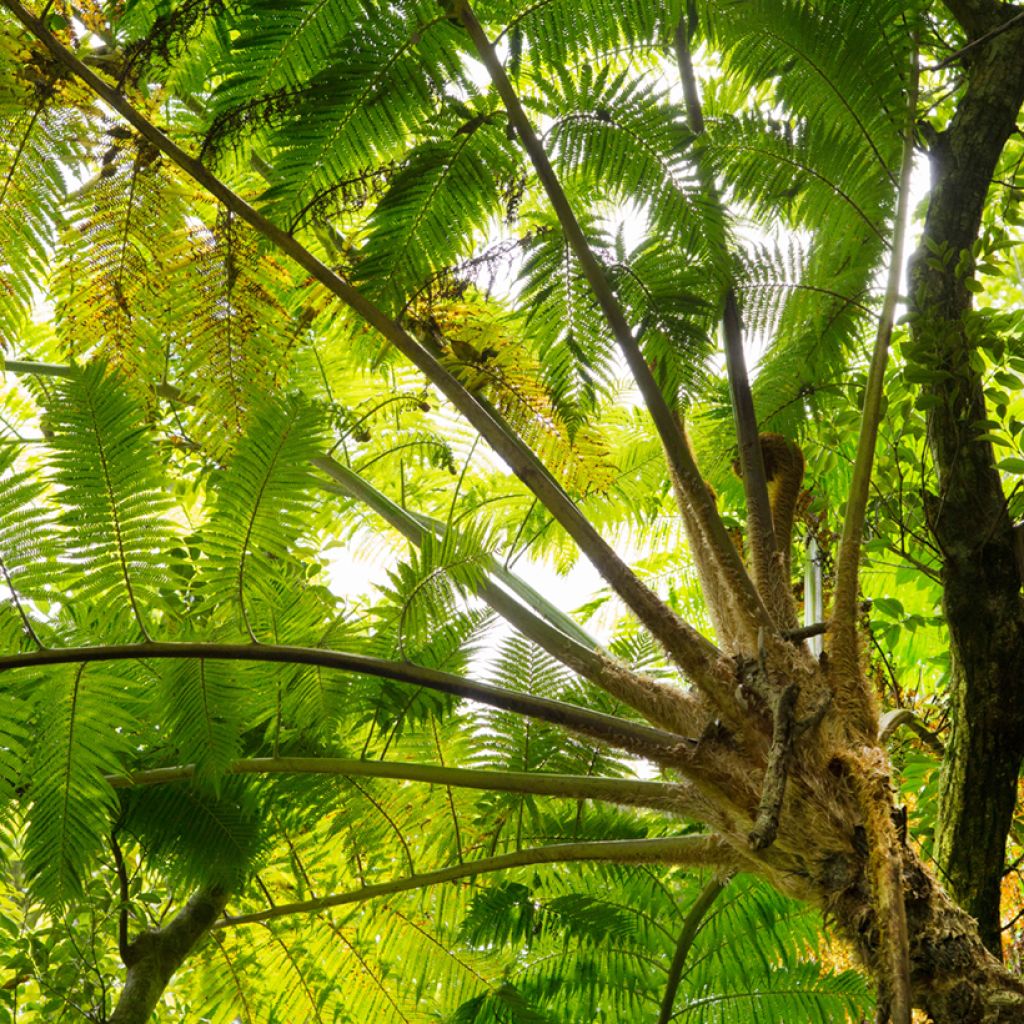

Cyathea felina - Tree fern
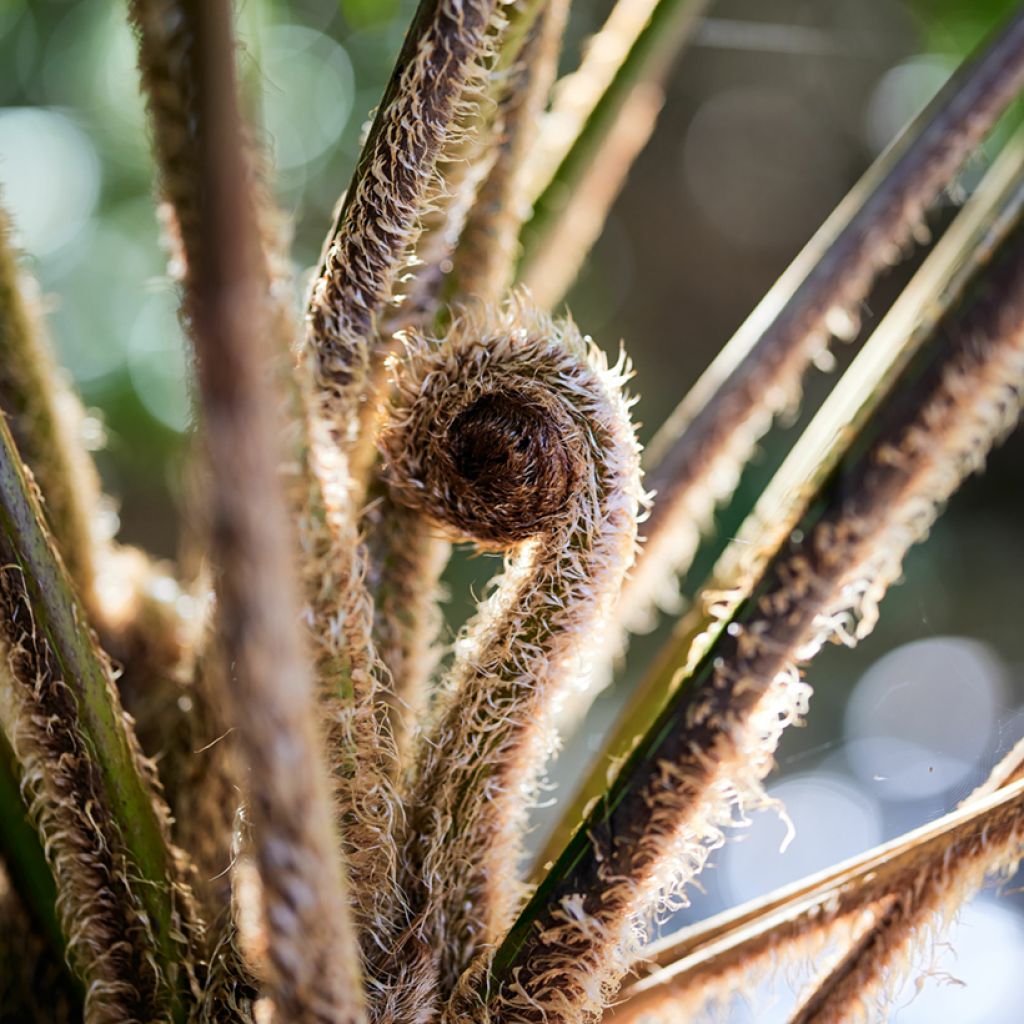

Cyathea felina - Tree fern
Cyathea felina - Tree fern
Cyathea felina
Tree fern
Why not try an alternative variety in stock?
View all →This plant carries a 24 months recovery warranty
More information
We guarantee the quality of our plants for a full growing cycle, and will replace at our expense any plant that fails to recover under normal climatic and planting conditions.
From €5.90 for pickup delivery and €6.90 for home delivery
Express home delivery from €8.90.
Does this plant fit my garden?
Set up your Plantfit profile →
Description
Cyathea felina (Sphaeropteris felina) is a sought-after tree fern, valued for its rarity, prized for its particularly elegant vertical habit and its characteristic light scales. It thrives in humid tropical forests, but can withstand temperatures close to 0°C when sheltered from the wind. This botanical species stands out with its upright fronds that create a unique cup-shaped silhouette. When cultivated in a pot in a veranda or a bright greenhouse, it brings a unique tropical atmosphere and becomes an impressive focal point. It is a plant that will delight enthusiasts and collectors alike.
Cyathea felina, also known as Sphaeropteris felina, is a tree fern native to New Guinea, Malaysia, Indonesia, and Australia, where it is listed as a threatened species in the state of Queensland. This exceptional species thrives in humid forests and coastal areas, typically in semi-shaded environments with some hours of sunlight.
In its natural habitat, it can reach over 8 metres in height with a trunk diameter of 30 cm. Its imposing fronds, measuring up to 4 metres in length, stand almost vertically. Its trunk and stipe are densely covered with scales ranging from light brown to golden blond, distinguishing it from similar but much less rare species.
In cultivation its dimensions are more modest: in the ground (in very mild climates spared from frost), it can grow up to 4 or 5 m. In a pot, in a veranda or a greenhouse, the plant reaches 2 to 3 m. Its fronds often measure over 2 m in length, carried by thick petioles densely covered with shiny scales. These fronds are wide, thick, and bright green. The reproductive organs, called spores, are round and globose, exceeding 3 mm in diameter and sometimes covering the entire underside of the fronds, an exceptional detail for a tree fern. Its rather upright habit results from the fronds' insertion, emerging at a much straighter angle than in other species such as Sphaeropteris cooperi. This gives it a powerful architectural appearance, often compared to a sculptural cup shape.
Like other tree ferns, this Cyathea felina requires humidity to thrive. Primitive plants which emerged from water before others, they remain dependent on it for their reproduction. This Cyathea is relatively cold-resistant, tolerating temperatures close to 0°C with appropriate protection. It also tolerates direct sunlight, provided the hottest hours of the day are avoided. For optimal growth, it demands a humus-rich, constantly moist soil. Regular addition of compost, manure, or humus is recommended to maintain substrate fertility.
Tree ferns are cold-sensitive plants, except for the quite common Dicksonia antarctica. However, they can be accommodated in a spacious conservatory or a large frost-free greenhouse. In a conservatory, Cyathea felina is spectacular, with its imposing presence and exotic elegance. To enhance this fern, pair it with a Fatsia japonica 'Variegata', a glossy dark green-leaved Philodendron 'Imperial Green', an Alocasia 'Polly' with large veined leaves, and an Asplenium nidus (Bird's Nest Fern) with a more compact silhouette and very different texture. These plants will create a dense and refined tropical setting. Setting them around an indoor pond or in a space with controlled humidity would enhance the exotic ambience.
Report an error about the product description
Plant habit
Foliage
Botanical data
Cyathea
felina
Cyatheaceae
Tree fern
Sphaeropteris felina
Australia
Other Tree Ferns
Planting and care
Planted in the ground:
Cyathea felina can be grown in the ground in regions with a tropical, subtropical, mild Mediterranean climate, and along the coast, provided that temperatures do not drop below 0°C. It can tolerate light frosts if well protected with a thick mulch at the base and winter cover. It prefers a semi-shaded location but can withstand direct sunlight, as long as the hottest hours of the day are avoided.
Soil and planting:
Plant it in a moist, organic-rich, well-draining soil. Mix compost, well-decomposed manure, or humus into the planting soil. Water regularly to keep the soil moist, especially during dry periods. Apply a thick organic mulch to retain moisture and enrich the soil over time.
Overwintered in a frost-free container:
In regions with colder winters, grow Cyathea felina in a large deep container. Choose a pot with a minimum diameter of 50 cm, filled with a substrate of tropical plant potting mix, compost, and perlite for good drainage. Water regularly to keep the substrate consistently moist, but avoid waterlogging.
Winter care:
In autumn, bring the plant indoors to a bright conservatory, greenhouse, or a non-heated or lightly heated room, protected from frost, with temperatures around 5 to 10°C. Reduce watering in winter while keeping the substrate slightly moist. Regularly mist the fronds to maintain high humidity and prevent drying out. Feed monthly from April to September with a liquid houseplant fertiliser to support its growth.
Planting period
Intended location
Care
This item has not been reviewed yet - be the first to leave a review about it.
Evergreen shrubs
Haven't found what you were looking for?
Hardiness is the lowest winter temperature a plant can endure without suffering serious damage or even dying. However, hardiness is affected by location (a sheltered area, such as a patio), protection (winter cover) and soil type (hardiness is improved by well-drained soil).

Photo Sharing Terms & Conditions
In order to encourage gardeners to interact and share their experiences, Promesse de fleurs offers various media enabling content to be uploaded onto its Site - in particular via the ‘Photo sharing’ module.
The User agrees to refrain from:
- Posting any content that is illegal, prejudicial, insulting, racist, inciteful to hatred, revisionist, contrary to public decency, that infringes on privacy or on the privacy rights of third parties, in particular the publicity rights of persons and goods, intellectual property rights, or the right to privacy.
- Submitting content on behalf of a third party;
- Impersonate the identity of a third party and/or publish any personal information about a third party;
In general, the User undertakes to refrain from any unethical behaviour.
All Content (in particular text, comments, files, images, photos, videos, creative works, etc.), which may be subject to property or intellectual property rights, image or other private rights, shall remain the property of the User, subject to the limited rights granted by the terms of the licence granted by Promesse de fleurs as stated below. Users are at liberty to publish or not to publish such Content on the Site, notably via the ‘Photo Sharing’ facility, and accept that this Content shall be made public and freely accessible, notably on the Internet.
Users further acknowledge, undertake to have ,and guarantee that they hold all necessary rights and permissions to publish such material on the Site, in particular with regard to the legislation in force pertaining to any privacy, property, intellectual property, image, or contractual rights, or rights of any other nature. By publishing such Content on the Site, Users acknowledge accepting full liability as publishers of the Content within the meaning of the law, and grant Promesse de fleurs, free of charge, an inclusive, worldwide licence for the said Content for the entire duration of its publication, including all reproduction, representation, up/downloading, displaying, performing, transmission, and storage rights.
Users also grant permission for their name to be linked to the Content and accept that this link may not always be made available.
By engaging in posting material, Users consent to their Content becoming automatically accessible on the Internet, in particular on other sites and/or blogs and/or web pages of the Promesse de fleurs site, including in particular social pages and the Promesse de fleurs catalogue.
Users may secure the removal of entrusted content free of charge by issuing a simple request via our contact form.
The flowering period indicated on our website applies to countries and regions located in USDA zone 8 (France, the United Kingdom, Ireland, the Netherlands, etc.)
It will vary according to where you live:
- In zones 9 to 10 (Italy, Spain, Greece, etc.), flowering will occur about 2 to 4 weeks earlier.
- In zones 6 to 7 (Germany, Poland, Slovenia, and lower mountainous regions), flowering will be delayed by 2 to 3 weeks.
- In zone 5 (Central Europe, Scandinavia), blooming will be delayed by 3 to 5 weeks.
In temperate climates, pruning of spring-flowering shrubs (forsythia, spireas, etc.) should be done just after flowering.
Pruning of summer-flowering shrubs (Indian Lilac, Perovskia, etc.) can be done in winter or spring.
In cold regions as well as with frost-sensitive plants, avoid pruning too early when severe frosts may still occur.
The planting period indicated on our website applies to countries and regions located in USDA zone 8 (France, United Kingdom, Ireland, Netherlands).
It will vary according to where you live:
- In Mediterranean zones (Marseille, Madrid, Milan, etc.), autumn and winter are the best planting periods.
- In continental zones (Strasbourg, Munich, Vienna, etc.), delay planting by 2 to 3 weeks in spring and bring it forward by 2 to 4 weeks in autumn.
- In mountainous regions (the Alps, Pyrenees, Carpathians, etc.), it is best to plant in late spring (May-June) or late summer (August-September).
The harvesting period indicated on our website applies to countries and regions in USDA zone 8 (France, England, Ireland, the Netherlands).
In colder areas (Scandinavia, Poland, Austria...) fruit and vegetable harvests are likely to be delayed by 3-4 weeks.
In warmer areas (Italy, Spain, Greece, etc.), harvesting will probably take place earlier, depending on weather conditions.
The sowing periods indicated on our website apply to countries and regions within USDA Zone 8 (France, UK, Ireland, Netherlands).
In colder areas (Scandinavia, Poland, Austria...), delay any outdoor sowing by 3-4 weeks, or sow under glass.
In warmer climes (Italy, Spain, Greece, etc.), bring outdoor sowing forward by a few weeks.

































